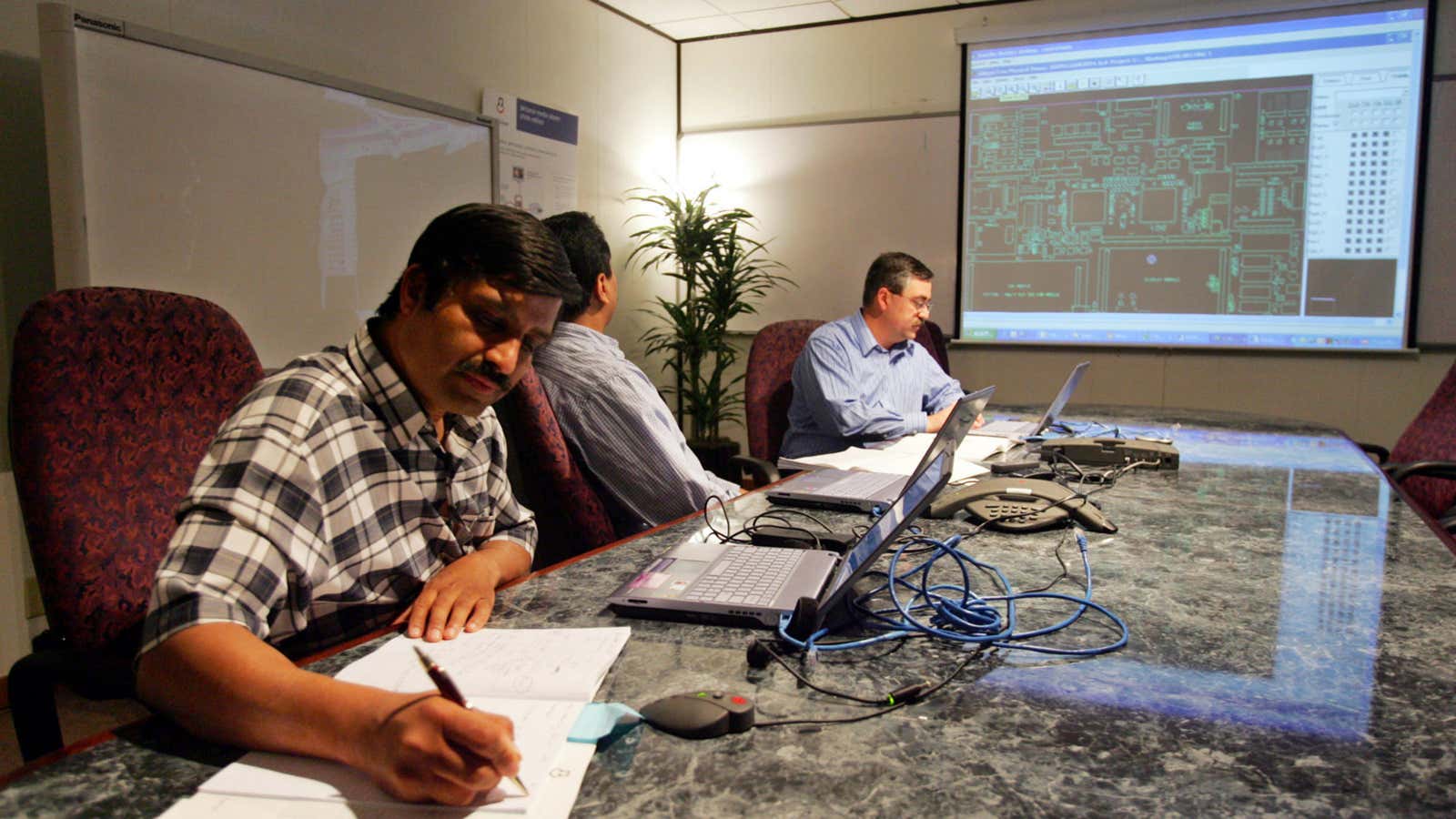Immigration reform looks like it might really happen in US President Barack Obama’s second term. Many have tried before and failed; few ever attempted a total overhaul of a very broken system. But amid sudden political momentum, what if the laws governing foreigners’ rights to live and work on US shores could be rewritten? Who would get to stay? How tight should borders be? Which countries and industries benefit? Quartz has been asking lawyers, advocates, and business leaders what a sound migration policy in America would look like.
For the first time in recent memory, immigration reform in the US appears to be a political slam dunk. Republicans smarting from a poor showing among all minorities publicly acknowledge they need to embrace Latinos and Asians to win the White House. An emboldened Barack Obama is chafing to push forward comprehensive changes to the immigration policy. Much of the noise around this issue has focused on dealing with the millions of undocumented workers.
But perhaps a more pressing issue (as I and Vivek Wadhwa argue in our book, “The Immigrant Exodus”) is reforming skilled immigration rules to allow more high-powered aliens to start companies, work, do research, and remain in America. A 2011 study found that nearly half of the Top 50 venture-backed companies in the U.S. had immigrants on the founding or top management teams. Another study estimated that 25% of publicly traded companies founded between 1990 and 2005, that had also received venture backing, had immigrant founders. A 2007 research project by Vivek Wadhwa and AnnaLee Saxenian found that 52% of science and technology companies in Silicon Valley, the global center of tech innovation, had at least one immigrant founder.
So if Washington D.C. could hit “reset” and completely reshape skilled immigration policy, what should it look like?
First, the startup visa needs to finally become a reality. This is a simple reform that will make it much easier for entrepreneurs who have already launched a science or technology business—or gotten a modest amount of funding to run their business—to work legally in the US running their company and to remain in the US should they generate a modest number of jobs. Small businesses create jobs. High-tech startups create good jobs. Risk-takers are needed to take this leap to start a company. Evidence shows that first-generation immigrants are more likely to take this risk. So let’s make it as easy as possible for them to enter the US and stay here.
Second, let’s reform the green card program, the path to permanent residency. The current law mandates that each nationality shall constitute no more than 7% of total recipients. Because Chinese and Indian nationals make up a significant percentage of the total pool due to their prevalence among H-1B recipients, the law has created a massive and frustrating backlog. Among this group, neither H-1B holders nor their spouses can pursue real careers or put down roots. They will need to wait for, in some cases, a decade or longer to know whether they will receive a green card. During this period, they cannot easily switch jobs and they cannot start companies. Further, should an H-1B holder lose their job, they must leave the country immediately, regardless of their tenure in the U.S. Many brilliant people waste the most productive years of their lives stuck in this backlog, living in fear.
Critics say too many H-1B holders are admitted and that competition for science and technology jobs in the U.S. is already fierce. This may be true but the skill distribution remains quite uneven. The country has a shortage of chemical engineers, critical care physicians, and iPhone programmers (who pull down more than $200,000 per year at some San Francisco companies). Ask any tech startup in the Bay Area if there is an oversupply of smart computer programmers and they will laugh in your face. So let’s assign preferences in the H-1B process to skill sets where a shortage is occurring or is projected in the US. The Canadian and Australian government undertake precisely this step. And such preferences will prevent the “body shoppers,” the middlemen who bring over workers and who know the H-1B process cold, from getting approvals for weak entrants with marginal skillsets in overserved domains or from investment banks bringing in smart foreign students to do grunt work.
Lastly, let’s get serious about locking in our intellectual property advantage by opening the gates for patent holders. While hardly a perfect indicator, patent awards are a relatively strong proxy for innovation and creative thinking. In the hard sciences, patents are just about the equivalent of an academic gold medal. Immigrant and foreign-born researchers appear on patent awards at a far higher rate than US-born researchers. Often, patent awardees are post-doctoral students or junior researchers who do not have tenure and may not be able to stay without sponsored employment. Their skills, however, are in high demand in other parts of the world. We should make sure they don’t need to leave. Every patent recipient should be put on a path to a green card. Brilliant brains yearning to be Americans are an economic free lunch we can ill afford to send back–and that goes double for entrepreneurs and techies and science workers with rare skills.
We welcome your comments at ideas@qz.com.
This is part of Quartz’s ongoing look at immigration reform. Previous pieces on this subject:
Obama could really help the US economy by pushing for more immigration
The Republicans lost the election because of their shameful record on immigration reform
